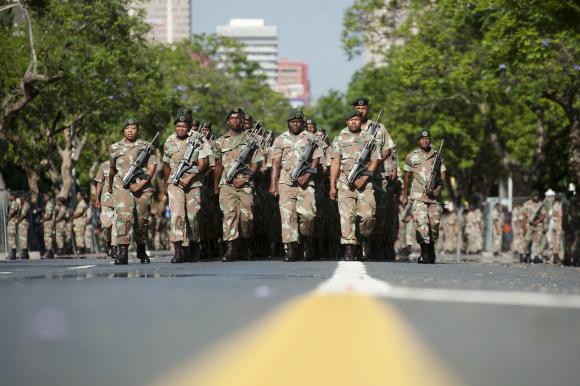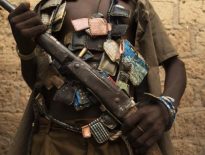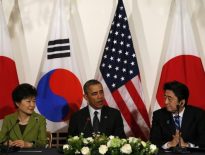(Reuters) – South Africa’s cash-strapped armed forces are in a critical state of decline that will take at least a decade to fix even with urgent action, according to a military strategy review seen by Reuters.

It said neglect of defense capability could impact everything from border security to trade and constrain Pretoria’s continental peace-keeping and diplomatic ambitions.
A regular contributor to United Nations peace missions in Africa, South Africa currently has troops in the Democratic Republic of Congo and Sudan, and its ships and frigates support anti-piracy efforts off Mozambique.
However, the 2014 South African Defense Review, seen by Reuters on Tuesday, says such deployments are under threat.
Even with an immediate intervention, it could take at least five years to arrest the decline and another five years to develop a limited and sustainable defense capability, the review said.
The long-term strategy document, which was approved this month by cabinet, is the first major assessment of the military capability of Africa’s biggest economy since one in 1998.
The longer the neglect is perpetuated, the greater the effort, time and cost that would be necessary to arrest the decline and restore the minimum capabilities required to safeguard South Africa’s borders, protect its maritime trade routes, conduct peace missions and humanitarian interventions, it added.
As specific examples, the report cited a lack of proper ammunition, ageing military transport planes and block obsolescence of the army’s prime mission equipment, such as infantry trucks.
The required ammunition stock for the national reserve is supposed to supply an army mechanized brigade for 90 days in a mixture of high, medium and low intensity operations, but current ammunition levels can by no means support this level.
The mainstay of South Africa’s military transport aircraft is the ageing Lockheed C-130 Hercules, which first entered service in the United States in the 1950s. The country has been shopping around for larger transport aircraft since cancelling a $5.2 billion contract to buy eight new Airbus A400M military transport planes in 2009.
Currently the fleet is unable to meet the lift requirements for supporting the external operations and any surge in this requirement will result in an even greater reliance on contracted airlift services, the review said.
Military analysts say the logistical short-comings were brought into sharp relief during a nine-hour firefight with rebels in the Central African Republic last year in which 13 South African soldiers were killed.
However, the report also said a lack of funding was preventing modernization of the 97,000-strong armed forces, including regulars, reserves and civilian staff.
Without more money, the military would be unable to support Pretoria’s diplomatic and commercial expansion in Africa, where old colonial powers such as France, and new economic ones such as China, are flexing their muscles, it added.
There must either be a greater budget allocation or a significantly scaled-down level of ambition and commitment, it said.
As a solution, the review suggested massive investment in heavy-combat capability, to augment peace-keeping in high-risk situations, as well as enhancing missile, air-lift and joint sea lift capabilities. It did not specify what heavy-combat capability should be, but experts said it could include attack helicopters and tanks.
This could almost double the military budget to 74 billion rand ($6.8 billion) by 2030 from around 40 billion rand in 2013 – equivalent to around 1 percent of GDP, a ratio well below other developed and developing nations.
Attaining the highest level of military security would mean regular annual funding of 116 billion rand or 3.3 percent of GDP, the review added.
Under apartheid, South Africa had one of the most feared and well-funded armed forces on the continent, but since the end of the Cold War and white-minority rule in the early 1990s, Pretoria has cut military spending dramatically in favor of health, housing, education and social security.
(Reporting by Wendell Roelf; Editing by Ed Cropley/Jeremy Gaunt)





